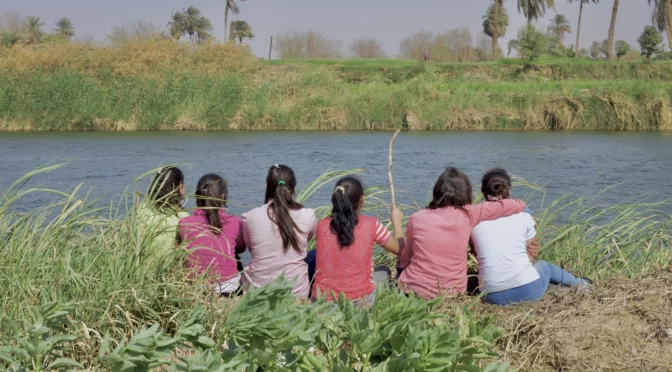Article by Lisa Cortopassi
Translation by Aurora Monteleone
In the opening image of The Brink of Dreams, we can see six girls running through a field. As in the case of the scene of three children walking in the Icelandic countryside from which Chris Marker’s Sans Soleil (1983) takes its cue, this moment also evokes the sensation of witnessing a dream, a vision of hope.
The dream soon gives way to the reality of a small Christian village in southern Egypt, where the protagonists set up a theater workshop. The playful experiments of these encounters give birth to Panorama El Barsha, a street theater troupe that enables the young women to establish a deep connection with the social fabric they belong to. The performances they stage are the result of brilliant reinterpretations of moments of intimacy and mutual trust: starting from their personal experiences, the six friends confront issues related to child marriage, the sense of oppression stemming from familial and societal expectations, and the claustrophobia that binds them and that they share with their peers in the audience.
Like in a stifling nightmare, male figures constantly try to suppress the protagonists’ ambitions. This dynamic takes shape in the prison simulated by the “fusion” of the girls’ bodies during their second public performance but it is also reflected in the mise-en-scène: the semi-subjective camera angles weighing down on the characters’ shoulders and the evocative gaze of Haidi as she looks up at the sky from her cramped home courtyard, surrounded by oppressive concrete walls.
Against all odds, a sense of invincibility emerges, a breath of optimism carried by the laughter of the actresses, the singing moments of Monika, and the resilience of Majda, who clings to her dream even when everything seems lost.


